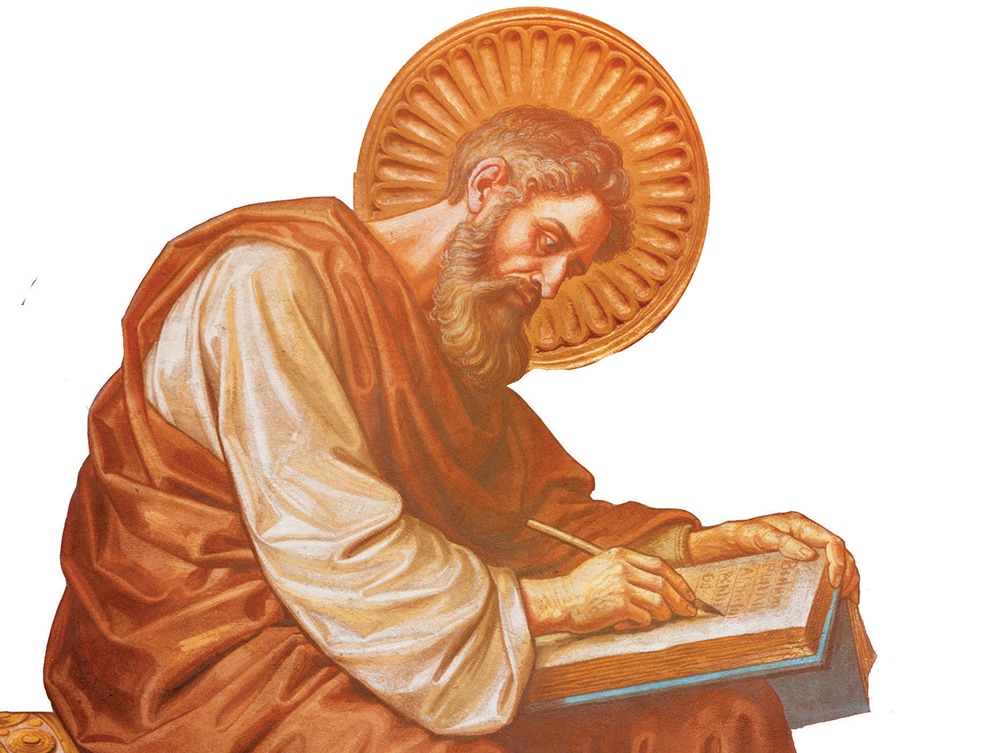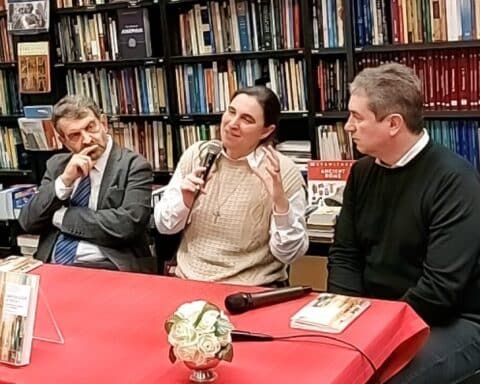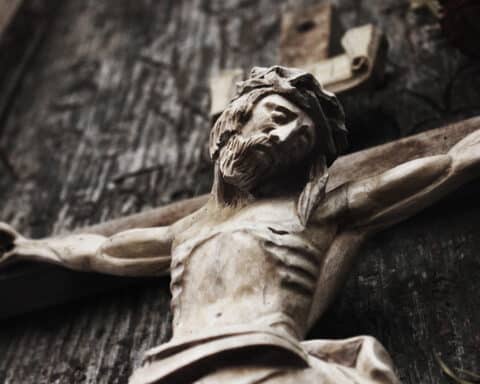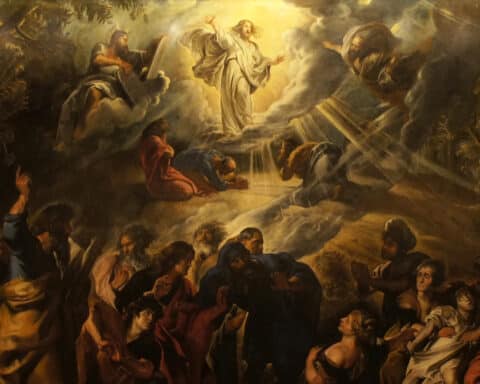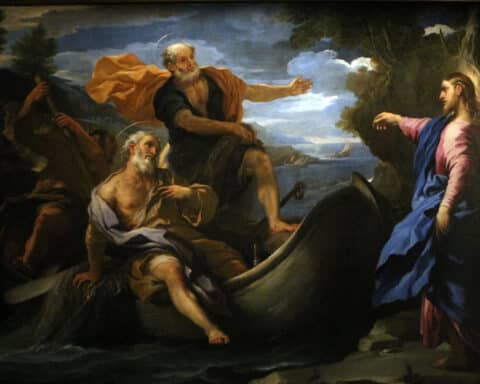Among the most popular, beautiful and reflective stories in all Scripture are those known as the infancy narratives found in the first two chapters of the Gospel according to St. Luke. The narratives are not only ageless, familiar stories, but they also provide a history of the infant Jesus that includes the Annunciation, the Visitation, the Nativity and the Presentation in the Temple. The entire Christian world focuses on these events every Advent and Christmas; Catholics also prayerfully recognize them in the Joyful Mysteries of the Rosary.
The reality of Luke’s words have inspired hundreds if not thousands of books, pictures and images of these events. Christmas cards are adorned with visualizations, and the Church recognizes them throughout the liturgical year. In our mind’s eye, even without the visual images, we too can see each of these miraculous scenes as meticulously described by St. Luke. His words in some 52 verses are in large measure what form our Advent and Christmas thoughts, prayers and memories.
D.D. Emmons writes from Pennsylvania.
………………………………………………………………………………………………………………………………………………………………………………
Luke’s Prologue
Luke begins his Gospel account, written around 65 A.D., with a prologue (Lk 1:1-4) explaining that in preparing his works he carefully investigated “everything accurately anew” and would “write it down in an orderly sequence for you, most excellent Theophilus, so that you may realize the certainty of the teachings you have received.” Probably, “investigating everything … anew” is reference to previous accounts of others and he is seeking the truth from those accounts. There are some writers and scholars who believe that certain parts of Luke’s detailed information may have come directly or indirectly from the Blessed Mother. Luke is so confident of the information he has garnered that he tells Theophilus, likely a person of authority, that the teachings he is providing can be received with assurance or “certainty.”
In the first two chapters of Luke, key figures in the infancy of Jesus are uniquely introduced: Zechariah, The Archangel Gabriel, Elizabeth, St. John the Baptist, the Blessed Mother, Joseph, the shepherds, Simeon (prophet) and Anna (prophetess). They are included among the humble, common, lowly people who rely entirely on God. These individuals and their role in the birth and life of our Savior are so richly and simply described by St. Luke that we comprehend and long remember fully every scene, every event.
Zechariah and Elizabeth
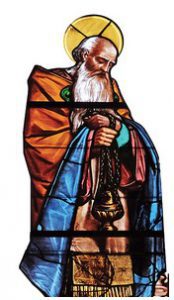
The infancy narrative begins (Lk 1:1-25) by telling about a righteous, elderly couple, Zechariah and Elizabeth, who were without a child and well past child-bearing age. In that era and place, a marriage without an offspring was considered the result of sin against God. Zechariah is a priest in the order of Abijah, and Luke explains that he has been selected to serve in the Jerusalem temple. As he is carrying out his priestly duty, he is visited by the Archangel Gabriel, who tells Zechariah that he and Elizabeth will have a child and “you shall name him John. And you will have joy and gladness, and many will rejoice at his birth, for he will be great in the sight of [the] Lord” (Lk 1:13-15).
Because of his advanced age, Zechariah responds in disbelief and is subsequently struck dumb by the angel because “you did not believe my words, which will be fulfilled at their proper time” (Lk 1: 20). Elizabeth soon conceives and acknowledges that the Lord has removed her disgrace (Lk 1:25). Zechariah will not be able to talk until John is born.
Annunciation
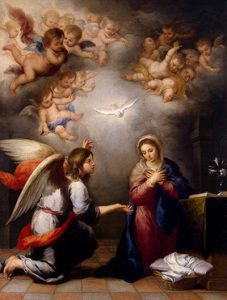
Six months after appearing to Zechariah, Gabriel appears to a young Jewish virgin named Mary and tells her that she will give birth to a son who she will name Jesus, and, “He will be great and will be called Son of the Most High, and the Lord God will give him the throne of David his father, and he will rule over the house of Jacob forever, and of his kingdom there will be no end” (Lk 1: 32-33). This teenage girl will give human nature to the Second Person of the Trinity, Jesus Christ, the Savior of the world.
Mary knew that the Jewish people were waiting for the Messiah, and she knew the Scripture prophecy of Isaiah 7:14: “The young woman, pregnant and about to bear a son, shall name him Emmanuel.” Emmanuel, meaning “God is with us.” When she asks Gabriel how this will happen to her since she is a virgin (and wants to remain a virgin), the angel responds, “The holy Spirit will come upon you, and the power of the Most High will overshadow you” (Lk 1:35). Gabriel is articulating to her that by the power of the Holy Spirit she will become the Virgin Mother of God. Any initial concern Mary may have had has been eliminated. The world will call this meeting between Gabriel and Mary the “Annunciation.”
Mary’s reaction
The initial greeting of the angel, “Hail, full of grace” (Lk 1:28), identified Mary as already immaculately conceived and born without sin. When Gabriel announced and explained her exalted role among all women, Mary responded by saying that she was simply a handmaid of the Lord and she would accept and do as the angel told her. She saw herself as the lowly servant of God.
While Zechariah had doubted the angel’s message, “Mary responded, ‘Behold, I am the handmaid of the Lord. May it be done to me according to your word'” (Lk 1:38). This is the response we are all called to make; simply, she said “yes.” She accepts, likely without full understanding, her role as described by God’s divine messenger. Whatever future she may have contemplated for herself is gone, as she will be at the center of the most important event of mankind.
The Visitation
Zechariah and Elizabeth lived in the village of Ain Karim (or Ein Kerem), some 80 miles south from Nazareth and five miles from Jerusalem. Mary’s journey took about four days, over rugged, even dangerous terrain. She slept in makeshift shelters, and the trip was not comfortable. Certainly, she would have been escorted, perhaps joining a pilgrimage going to Jerusalem, but the Scriptures don’t say. Her thoughts, though, are not on herself or the uncomfortable travel, but on Elizabeth.

She could have stayed home in Nazareth and, given that she was in the early stages of pregnancy, that would have been a reasonable decision; thus, going to Ain Karim exemplifies her charity to those in need. Of course, Mary also wants to share her joyful news, the Annunciation, and it is not by chance that the Holy Spirit guides her to an older relative who is also pregnant.
Arriving at the home of Zechariah and Elizabeth, Mary is surprised to learn that her relative is aware of Mary’s pregnancy. Elizabeth immediately says to her: “Most blessed are you among women, and blessed is the fruit of your womb. And how does this happen to me, that the mother of my Lord should come to me?” (Lk 1:42-43). Only through the grace of the Holy Spirit does Elizabeth know Mary’s secret; she refers to the child in Mary’s womb as “my Lord.”
Then she tells Mary that at the sound of Mary’s voice the child in her womb “leaped for joy” (Lk 1:44). Zechariah likely remembered the words of Gabriel, “He [John] will be filled with the Holy Spirit even from his mother’s womb” (Lk 1:15).
Today, 21 centuries later, every time we say the Hail Mary we claim, “Blessed art thou among women.”
Birth of John
At the birth of John, the neighbors came to rejoice with Elizabeth and Zechariah. They all believed that the child will be called Zechariah after his father. When they find out that he will be called John (“Yahweh is gracious”) they debate the name selection. Zechariah, who is still mute, wrote on a tablet: “‘John is his name,’ and all were amazed. Immediately his mouth was opened, his tongue freed and he spoke blessing God” (Lk 1:63-64).
He has fulfilled the direction given to him by Gabriel in the Jerusalem temple. The neighbors, on the other hand, wondered what all this meant: “What, then, will this child be? For surely the hand of the Lord was with him” (Lk 1:66). Zechariah will extol and praise God through his canticle, the Benedictus (Lk 1:67-79), which continues as part of the Morning Prayer in the Divine Office of the Church.
Everything in this first chapter of Luke’s Gospel, filled with miracles, is leading to the incarnation of Jesus, and all that is taking place is like a bridge connecting the old covenant and the new, the Old Testament and the New.
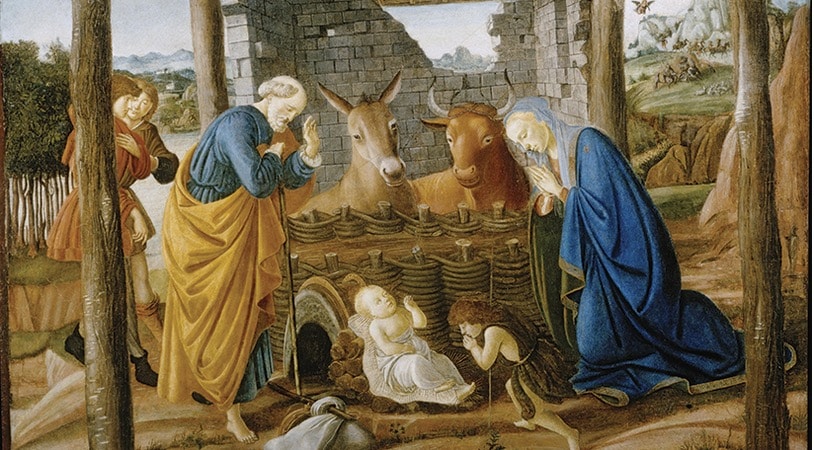
The birth of Jesus
In Chapter 2 (1-20), Luke explains the Incarnation, beginning with St. Joseph taking his pregnant wife from Nazareth to participate in the Roman-required census in Bethlehem. While it was not necessary for Mary to accompany Joseph, Bethlehem was Joseph’s home and they may have wanted to settle there, and it was a place to find work.
It was here in a shelter for animals that Jesus was born; the Word was made flesh, God became man and the world changed forever. A stable or shelter for animals is not a place for a child’s birth, yet God selects this most humble surrounding for his Son to become part of humankind.
Only St. Luke tells us how the angels sing out the joy of Christ’s birth to the shepherds, who were “living in the fields and keeping the night watch over their flock” and how they were “struck with great fear” (Lk 2:8-9). The angels respond to their fear and echo the words of Gabriel to Mary and Zechariah, “Do not be afraid” (Lk 2:10). The angels proceed to tell the astonished shepherds that the Messiah, the Savior, has been born in the city of David. All Christians rejoice in their words each time we celebrate the birth of Christ.
The angels announce an “infant,” meaning a child — a human being is born; he is both God and man. There were many who would not accept this possibility. The all-perfect God has come in the form of an infant who in a short 33 years will take on the sins of the world.
Wrapping the baby Jesus in swaddling clothes is the way most newborn Jewish children were treated. (He will be wrapped in a similar way at his burial.) Laying him in a manger was not the normal place for a Jewish infant. God could have chosen a palace, surrounded by every kind of luxury and riches, but instead his son entered the world in quiet humility.
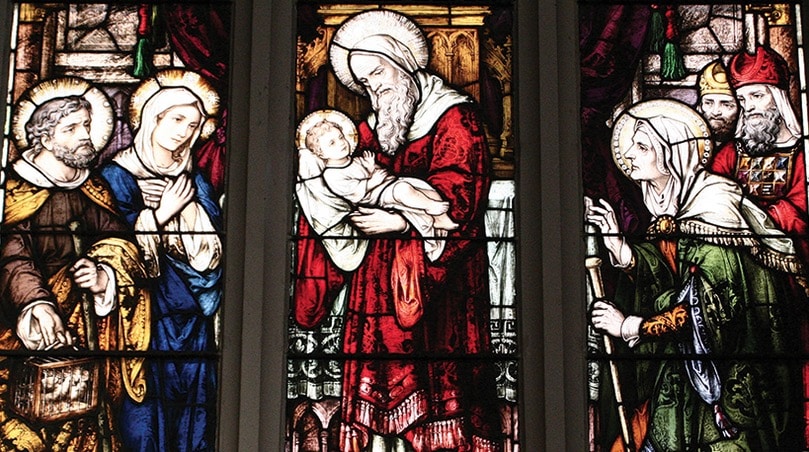
The Presentation
The circumcision of a male baby was performed eight days after the child’s birth and, in accordance with the instructions of Gabriel, Mary’s baby is named Jesus (Lk 1:31). The circumcision is followed by the obligatory presentation in the temple, which involves both Jesus and Mary. Mosaic law required that a new mother present herself in the temple 40 days after giving birth to a male baby and be ceremoniously purified.
Jesus was brought along at the same time, because the law required that the first child of a Jewish family be consecrated to God. Following the purification ceremony, Mary, who had been in seclusion since Jesus’ birth, is able to resume her public role as mother and wife. Inside the busy temple, the consecration of Jesus takes place next.
After waiting their turn, the Holy Family hands Jesus to the temple priest in charge. He blesses and consecrates Jesus to God, and then the Holy Family ransoms Jesus back by making a contribution of five shekels to the temple. This consecration ceremony is carried out in accordance with God’s command in Exodus. Also, this ritual remembers how God spared the firstborn of Israel during the Passover when the Israelites were preparing to leave the slavery of Egypt; the firstborn of Egypt, because of Pharaoh’s obstinacy, were not spared (Ex 12:24-30).
Before Mary and Joseph depart the temple for home, an old priest named Simeon approaches the family: “It had been revealed to him by the holy Spirit that he should not see death before he had seen the Messiah of the Lord” (Lk 2:25-26). Simeon, in the midst of all the mothers and children coming that day for the same rituals, recognizes Jesus as the Messiah. He prays to God: “Now, Master, you may let your servant go in peace, according to your word, for my eyes have seen your salvation, which you prepared in sight of all the peoples, a light for revelation to the Gentiles, and glory for your people Israel” (Lk 2:29-32). Bishop Sheen in his book “Life of Christ,” wrote, “In a poor child brought by poor people making a poor offering, Simeon discovered the riches of the world.”
Simeon, graced with prophecy, tells Mary that she will suffer watching her Son, who “is destined for the fall and rise of many in Israel, and to be a sign that will be contradicted (and you yourself a sword will pierce)” (Lk 2:34-35). Mary will witness, stay with and remain faithful to him through it all.
Of Mary’s faithfulness, Pope St. John Paul II said: “It is easy to be consistent for a day or two. It is difficult and important to be consistent for one’s whole life. It is easy to be consistent in the hour of enthusiasm: It is difficult to be so in the hour of turbulence and only a consistency that lasts throughout the whole of life can be called faithfulness. Mary’s ‘fiat’ in the Annunciation finds its fullness in the silent ‘fiat’ that she repeats at the foot of the Cross” (homily at Mexico City, Jan. 26, 1979).
Also present in the temple is Anna, an 84-year-old widow and prophetess, who, like Simeon, had spent her life in the temple looking for the Messiah. Here patience is rewarded. At the consecration ritual, she, too, recognizes who the baby Jesus is, and “she gave thanks to God and spoke about the child to all who were awaiting the redemption of Jerusalem” (Lk 2:38).
The Holy Family, likely elated over the ceremonies but perplexed by the words of Simeon, returns to Nazareth.

